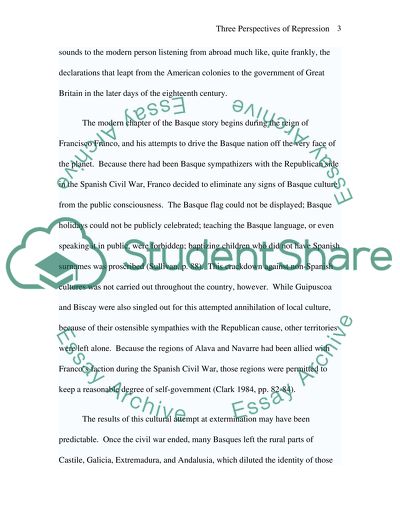Cite this document
(“Basque History Essay Example | Topics and Well Written Essays - 2500 words”, n.d.)
Retrieved from https://studentshare.org/history/1512381-basque-history
Retrieved from https://studentshare.org/history/1512381-basque-history
(Basque History Essay Example | Topics and Well Written Essays - 2500 Words)
https://studentshare.org/history/1512381-basque-history.
https://studentshare.org/history/1512381-basque-history.
“Basque History Essay Example | Topics and Well Written Essays - 2500 Words”, n.d. https://studentshare.org/history/1512381-basque-history.


